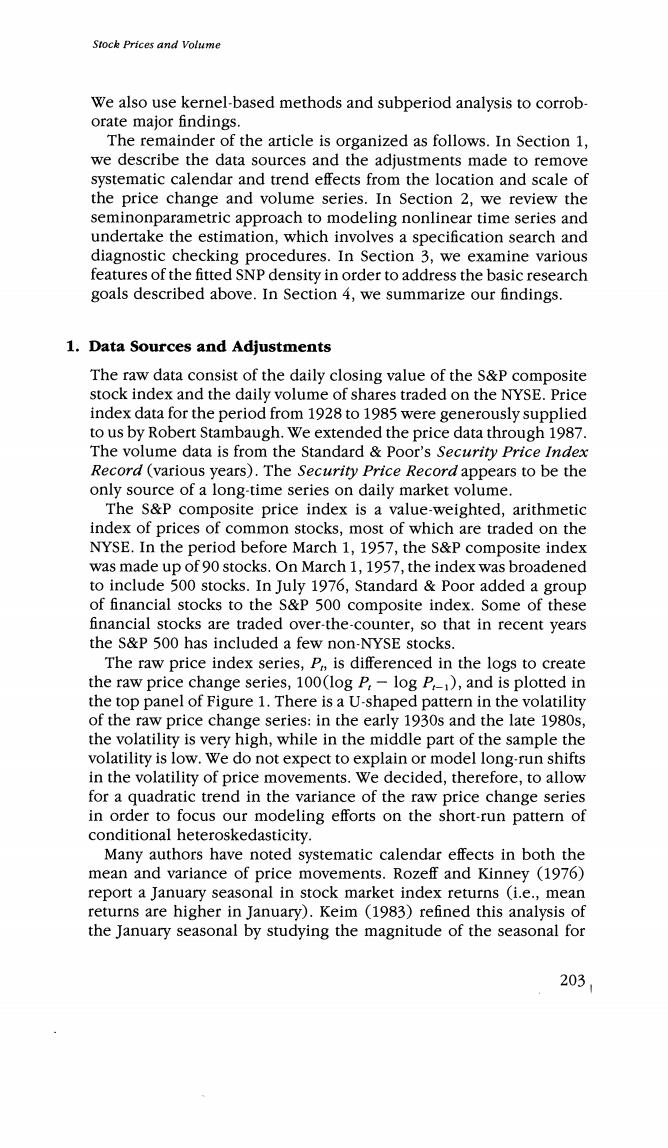正在加载图片...

Stock Prices and Volume We also use kernel-based methods and subperiod analysis to corrob- orate major findings. The remainder of the article is organized as follows.In Section 1, we describe the data sources and the adjustments made to remove systematic calendar and trend effects from the location and scale of the price change and volume series.In Section 2,we review the seminonparametric approach to modeling nonlinear time series and undertake the estimation,which involves a specification search and diagnostic checking procedures.In Section 3,we examine various features of the fitted SNP density in order to address the basic research goals described above.In Section 4,we summarize our findings. 1.Data Sources and Adjustments The raw data consist of the daily closing value of the S&P composite stock index and the daily volume of shares traded on the NYSE.Price index data for the period from 1928 to 1985 were generously supplied to us by Robert Stambaugh.We extended the price data through 1987. The volume data is from the Standard Poor's Security Price Index Record(various years).The Security Price Record appears to be the only source of a long-time series on daily market volume. The S&P composite price index is a value-weighted,arithmetic index of prices of common stocks,most of which are traded on the NYSE.In the period before March 1,1957,the S&P composite index was made up of 90 stocks.On March 1,1957,the index was broadened to include 500 stocks.In July 1976,Standard Poor added a group of financial stocks to the s&P 500 composite index.Some of these financial stocks are traded over-the-counter,so that in recent years the S&P 500 has included a few non-NYSE stocks. The raw price index series,P,is differenced in the logs to create the raw price change series,100(log P:-log P,-1),and is plotted in the top panel of Figure 1.There is a U-shaped pattern in the volatility of the raw price change series:in the early 1930s and the late 1980s, the volatility is very high,while in the middle part of the sample the volatility is low.We do not expect to explain or model long-run shifts in the volatility of price movements.We decided,therefore,to allow for a quadratic trend in the variance of the raw price change series in order to focus our modeling efforts on the short-run pattern of conditional heteroskedasticity. Many authors have noted systematic calendar effects in both the mean and variance of price movements.Rozeff and Kinney (1976) report a January seasonal in stock market index returns (i.e.,mean returns are higher in January).Keim (1983)refined this analysis of the January seasonal by studying the magnitude of the seasonal for 203